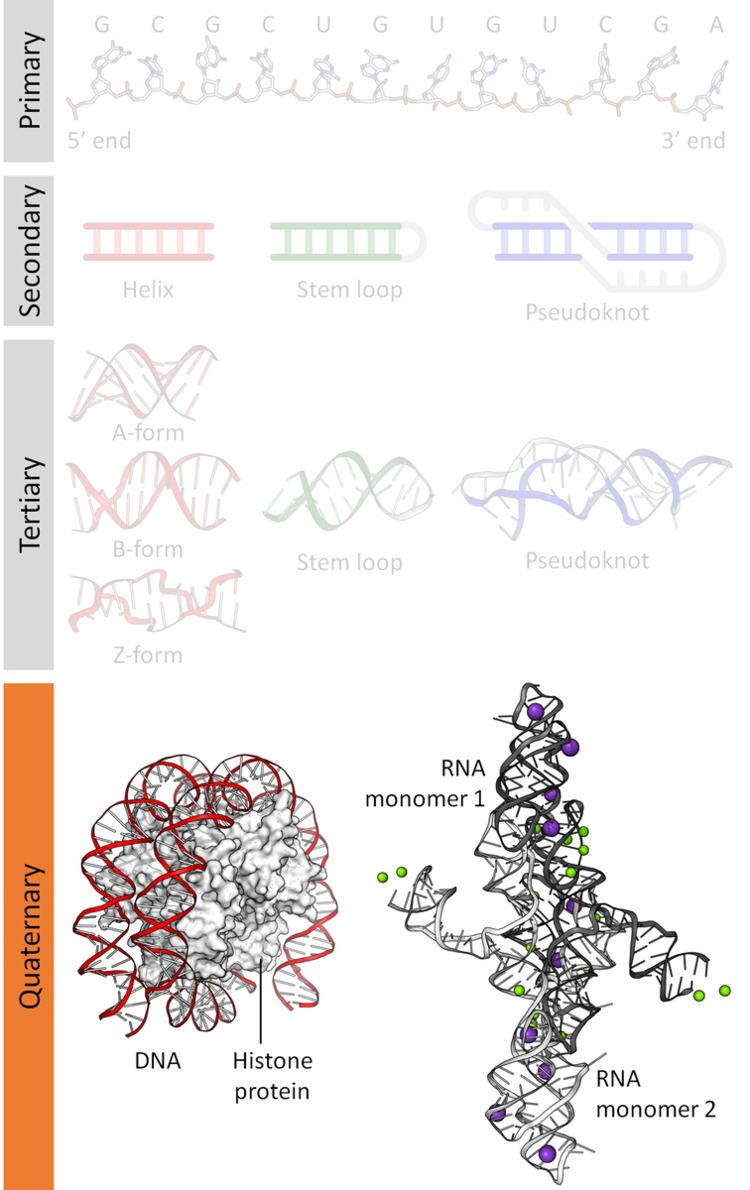 | ||
Nucleic acid quaternary structure refers to the interactions between separate nucleic acid molecules, or between nucleic acid molecules and proteins. The concept is analogous to protein quaternary structure, but as the analogy is not perfect, the term is used to refer to a number of different concepts in nucleic acids and is less commonly encountered.
Contents
DNA
DNA quaternary structure us used to refer to the binding of DNA to histones to form nucleosomes, and then their organisation into higher-order chromatin fibres. The quaternary structure of DNA strongly affects how accessible the DNA sequence is to the transcription machinery for expression of genes. DNA quaternary structure varies over time, as regions of DNA are condensed or exposed for transcription. The term has also been used to describe the hierarchical assembly of artificial nucleic acid building blocks used in DNA nanotechnology.
RNA
Symmetrical complexes of RNA molecules are extremely uncommon compared to protein oligomers. One example of an RNA homodimer is the VS ribozyme from Neurospora, with its two active sites consisting of nucleotides from both monomers.
The best known example of RNA forming quaternary structures with proteins is the ribosome, which consists of multiple rRNAs, supported by rProteins. Similar RNA-Protein complexes are also found in the spliceosome.
